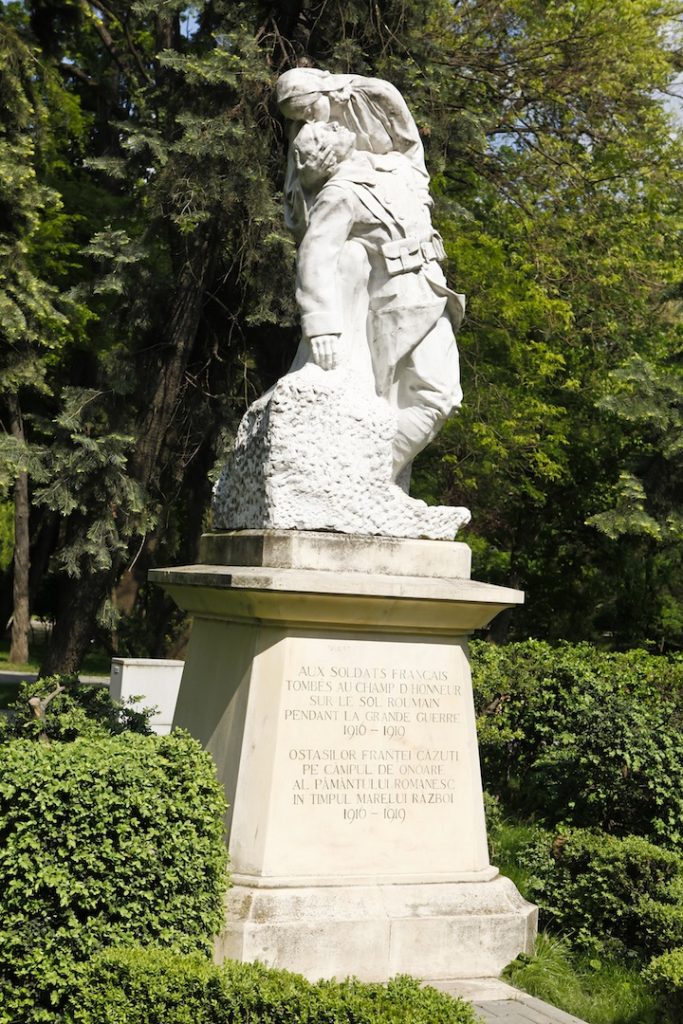
Monumentul Eroilor Francezi este un grup statuar din marmură de Carrara, opera sculptorului Ion Jalea, dedicat memoriei „Ostașilor Franței căzuți pe câmpul de onoare al pământului românesc în timpul Marelui Război 1916-1918” .
Statuia dedicată soldaților francezi înfățișează o soră medicală care se apleacă asupra unui soldat rănit.
Monumentul a fost inaugurat la 25 octombrie 1922.
Alte lucrări ale sculptorului Ion Jalea în București: Monumentul eroilor ceferiști, de lângă Gara de Nord, Statuia „Lupta lui Hercule cu Centaurul”, amplasată în Parcul Herăstrău, Statuia lui Spiru Haret din Piața Universității, Bustul lui Mihai Eminescu din Rotonda scriitorilor, Statuia lui George Enescu din fața Operei Naționale, Bustul lui Miguel de Cervantes amplasat în Piața Spania.
Ce semnificație are Monumentul soldaţilor francezi?
În cimitire din București, Alexandria, Constanța, Galați, Iași, Slobozia și Timișoara sunt îngropați 433 de militari francezi morți în timpul Primului Război Mondial. O parte dintre ei au făcut parte din unitatea care l-a însoțit pe generalul Berthelot în misiunea sa de asistență a armatei române, între 1916 și 1917. Mulţi dintre medicii şi infirmierele Misiunii au pierit în lupta pentru limitarea ravagiilor pe care le-a făcut tifosul atât în rândul militarilor, cât şi în cel al populaţiei civile.
Acest monument este o dovadă a recunoștinței pentru o țară cu care România a avut de-a lungul timpului o relație specială, Franța.
Pentru mai multe informații, apasă aici.

